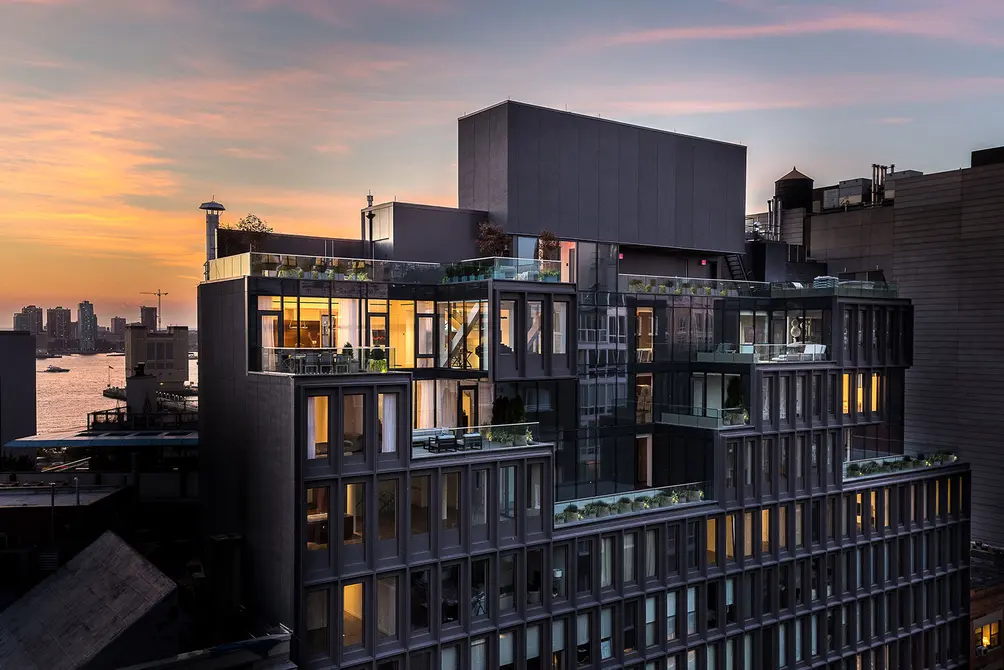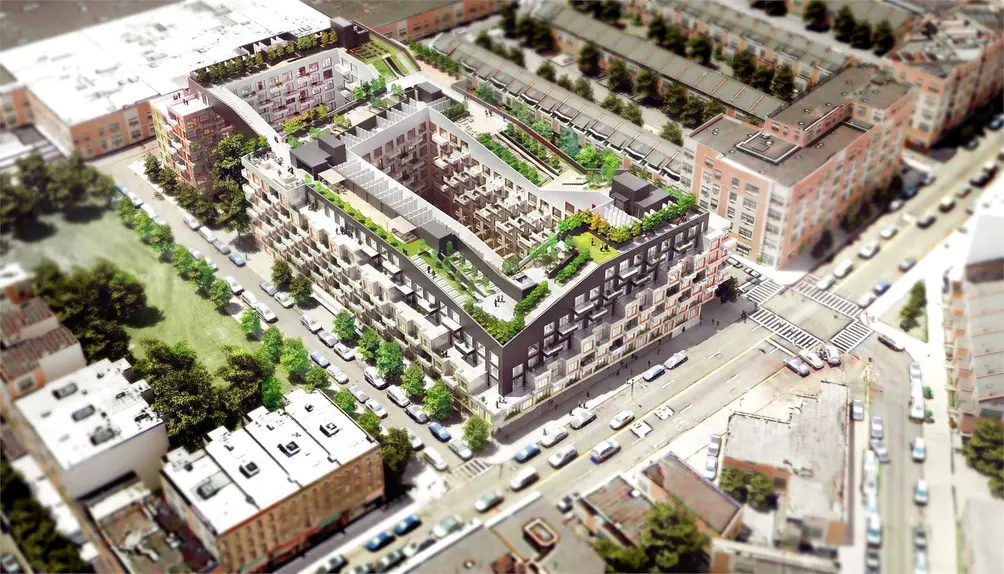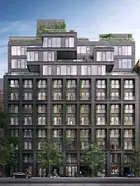Some architects just consider the building they are working on. But Eran Chen, the founder and executive director of ODA, Office for Design and Architecture, takes a broader view. Not only does he focus on the specific architecture for each building project but he considers the spaces the building creates, the way the architecture can affect people on emotional levels, and the vitality of the city, all as equally important. Chen’s work evokes cities of the past when amenities were provided by the built environment, not the buildings themselves. He designs with an innovative and sleek modernity while seeking to recreate cities that function as a whole versus disassociated parts.
ODA's work spans all of New York, from historic renovations in Brooklyn and luxury residential interiors on the Upper East Side, to a hotel in Soho and a mall in Yonkers.
We interviewed Eran Chan about how his philosophy fits into New York City.
ODA's work spans all of New York, from historic renovations in Brooklyn and luxury residential interiors on the Upper East Side, to a hotel in Soho and a mall in Yonkers.
We interviewed Eran Chan about how his philosophy fits into New York City.
In this article:
You’ve said, "I’d like to change the way we look at the built environment so that our buildings are not just conforming contextually or performing technically, but rather making enormous strides towards engaging and connecting us back to nature and one another." It seems that the trend in NYC development—particularly at the higher end—is to have all inclusive amenities in the buildings (e.g. children's playrooms, lounges, fitness centers). If buildings are all inclusive, there is little reason for people to leave (to go to a playground or gym), creating a lot of isolation. How do you work around/avoid this?
Eran: The concept of "inclusive amenities" in buildings is a fairly new one, which I believe, came about as a result of the necessary expansion of building size due to an increased population. Added to that is the lack of good architectural solutions that can provide the kind of qualities previously available in less densified areas—the streets used to provide our amenities, if you think about it. If one looks at old European cities for example, where little courtyards are populated with neighborhood cafes, kids playing, and people on leisurely bike rides, you realize that the need for a kids playroom in the basement, or a lounge room simply isn’t there.
"The streets and courtyards are the extension of the life lived within the buildings, and in contrast, 'exclusive' sounds like a punishment of isolation. At ODA, we strive to restore what we've lost..."
The streets and courtyards are the extension of the life lived within the buildings, and in contrast, "exclusive" sounds like a punishment of isolation. At ODA, we strive to restore what we've lost, to fight against the isolation of our growing cities and bring similar qualities in new formats. We look to fragment our buildings by creating growing pockets and urban voids which can be orchestrated and programmed to attached communal interactions. We always look to increase indoor/outdoor activity by breaking away from the typical extruded big box format our cities are comprised of. We look at our built environment as an open and more organic loop, reducing dead end situations.
How do you prioritize spaces between building?
Eran: The space between the buildings is as important as the buildings themselves. If we realize that our lives are conducted not only inside our apartments but also outside and in between them, we can start carving out well designed pockets of outdoor space in those voids. Think of it as a vertical village like Cinque Terre in Italy, or Saorge in France, where one person’s roof is also someone else's garden, and the gaps between homes, an inhabitable special experience.
You've exploited NYC’s zoning laws to push the boundaries and maximize voids in a number of projects. Can you elaborate on this?
Would you like to tour any of these properties?
Just complete the info below.
Or call us at (212) 755-5544
Eran: We recently completed two projects in NYC—15 Renwick Street and The Flynn in Chelsea—where we took a common zoning regulation called the "Dormer rule" and gave it a whole new meaning.
The dormer rule allows architects to encroach within the sky exposure plane above the characteristic NYC setbacks. The rule allows for a shape that many times ends up being a stepped triangle with two to three penthouse apartments overlooking each other.
We realized that the space between the building street wall and the zoning setback is a great opportunity to create an engaging experience between the units; and between the building with the street. We realized that the dormer rule is almost a way to measure the amount by which a building can reduce its setbacks and not a prospective way to define its shape. By rethinking the rule and redefining the way the dormers define the space around them we created a spatial experience shared by more apartments and that provides far more outdoor space. It is an experience that goes beyond the zoning parameters to act as real extension of the apartment space and create an unusually engaging experience.
We realized that the space between the building street wall and the zoning setback is a great opportunity to create an engaging experience between the units; and between the building with the street. We realized that the dormer rule is almost a way to measure the amount by which a building can reduce its setbacks and not a prospective way to define its shape. By rethinking the rule and redefining the way the dormers define the space around them we created a spatial experience shared by more apartments and that provides far more outdoor space. It is an experience that goes beyond the zoning parameters to act as real extension of the apartment space and create an unusually engaging experience.
 ODA: 15 Renwick Street
ODA: 15 Renwick Street
 ODA: 10 Montieth Street in Bushwick
ODA: 10 Montieth Street in Bushwick
How do you use nature in your architecture?
Eran: In one Bushwick project, we have sloped the roof of the building like a mountain, where every floor above the third has direct access to it from each corridor. The roof was lushly landscaped and the access from so many levels creates an almost endless loop, connecting the inside and out within the building. In this instance, nature becomes a connector and not a dead-end roof garden. This renders it not only a destination but part of a daily routine.
In another project in DC, we incorporated built-in planters in every apartment in such a way that would create a second layer to the facade, which is shaped like a cascading terraces similar to the rice fields in the Far East. The plantings, which are indigenous and multi-seasonal, are cared for by the building as an amenity. Their presence provide a constant frame of nature to all the rooms.
 Sydney, Australia
Sydney, Australia
In your opinion, is there a city that's doing an especially good job at integrating diversity and prioritizing nature?
Eran: Sydney, Australia is done pretty good job exploiting its access to the water, and engaging people with the outside. However, I must say that even Sydney is now adopting typical skyscraper formats from NYC. This is very much a reaction to it’s own growth and needs to seek innovative solutions, rather than doing more of the same.
Would you like to tour any of these properties?
Just complete the info below.
Or call us at (212) 755-5544
Would you like to tour any of these properties?

Contributing Writer
Michelle Sinclair Colman
Michelle writes children's books and also writes articles about architecture, design and real estate. Those two passions came together in Michelle's first children's book, "Urban Babies Wear Black." Michelle has a Master's degree in Sociology from the University of Minnesota and a Master's degree in the Cities Program from the London School of Economics.



 6sqft delivers the latest on real estate, architecture, and design, straight from New York City.
6sqft delivers the latest on real estate, architecture, and design, straight from New York City.
